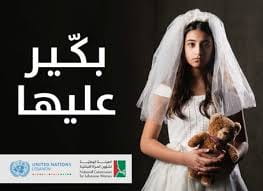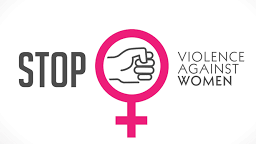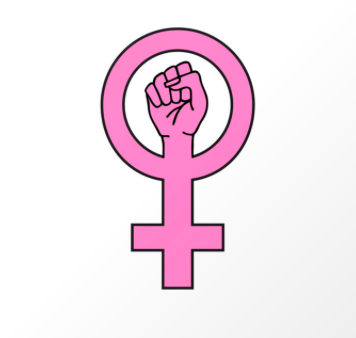
by Jana Madi | May 7, 2020 | Visualization
Going over UNICEF’s datasets, I noticed that child marriage in Lebanon is very common especially for girls and there are many factors leading to these high percentages. One of the main factors would be that different religions and sects have different minimum age requirements for marriage and the absence of laws. Religious courts regulate most cases and set the minimum age to be fifteen, however, it is worth noting that some girls are forced to get married at ages younger than that.
The below visualization shows the legal marriage age across different religions in Lebanon.

Law enforcement is a major step in decreasing child marriage. Lebanon should develop a national strategy to end child marriage

by Jana Madi | May 7, 2020 | Visualization
Further to inspecting the World Development Index datasets on Tableau, I was surprised by the proportion of women subject to violence in the world. Although many NGOs and organizations are working very hard on achieving equality between men and women, violence against women is still an issue that is sometimes neglected. Digging deeper into the indicators, I noticed that the proportion of violence against women is higher in countries that have no legislation to protect women or don’t abide by the existing laws.

As we can see from the below visualization, countries that enforced laws to protect against women violence had a major decrease in the proportion of violence

It is very important to increase awareness of the causes and consequences of violence and build capacity of partners to prevent and respond to violence. Moreover; we should work on promoting the need for changing norms and behavior and advocating for gender equality and women’s rights.

by Ghida | May 5, 2020 | Dashboard, Visualization
Females in the Arab World are always faced with discriminatory situations in a ‘professional environment’. From personal questions in an interview to on-the-job obstacles, something always has to remind us of who we are and how anchored we are to it. It is not very different around the world, however, females have only recently started to break through the notions of the ‘working man’, proving that the only professional difference between them is inside the minds of those who believe it exists.
When I started exploring the World Development Indicators data on Tableau, I could not but stop at the Employment to Population Ratio. So I developed a dashboard visualized below.

As seen on the map, there are big differences in Female Employment to Population Ratios around the world. Looking deeper into the ratios of 2 adjacent but very different cultures, the European Union and Arab Countries – the line graphs to the right -, we can notice the difference in the gaps between female and male ratios. While the Male Employment to Population Ratio is almost the same across both areas, there is a big difference in the female’s numbers, of course affecting the total ratios.
I believe the needed change starts in education – not only that of little girls who need to be equipped by the time they can join the workforce, but also of societies to be welcoming, and supportive of those girls. Many forces enter in this journey, in many cases education is an unaffordable luxury, which is why the intrusion of governments and NGOs is highly needed.
The featured image is from Aptology.

by Mira Dannawi | May 5, 2020 | Visualization
Being a woman has been a very difficult mission from the beginning of humanity till our days, as she faces a lot of obstacles from birth till death. Speaking as a woman and as a human, I consider that gender inequality is a personnel issue that every woman should stand against, asking for equal rights to men. Therefore, I searched for data that can best track the severity of this issue, and found the dataset of the World Bank about genders. Among a set of indicators, I found one indicator that can speak it all, which is the WBL index.
A WBL index is how much a woman scores as man i.e. how much there are laws that support her and treat her equally to men in all the stages of her life: marriage, employment, salary, inheritance, entrepreneurship… Therefore, WBL index is the average score of all these factors, where a score of 100 means that a woman has the same rights as a man. The less this index is, the less women are treated as men.
In this visual, one can see that Morocco has the highest WBL index among all the countries in Arab World, where it has scored 75.6 i.e. a woman in Morocco has three quarters of a man’s rights. Lebanon is lying in the middle, and has scored 52.5 meaning that a Lebanese woman has half the rights of a man. Jordan has the lowest WBL index where it has scored 40.6. However, I tended not to include Saudi Arabia’s status because of the contradicting sources defining its status, but noting that its position in gender equality has improved remarkably after the reforms taken by the government.

In order to reduce this gap between men and women, governments should update their laws to give equal rights for both genders, tackling all the previously mentioned factors: marriage, employment, salary… Moreover, children and parents should be educated that men and women are of equal importance and no gender is superior to the other, given the fact that humanity wouldn’t have continued to exist without the existence of both men and women. Thus, genders should be given equal rights.

by Celine Abdallah | May 5, 2020 | Uncategorized
“Transformation is often more about unlearning than learning”. – Rohr R.
As communities still follow their traditions and norms instead of educating themselves about the harms of child marriage, it continues to pose a threat to future generations to this day. Several factors shown in the dashboard can act as indicators for us to know in which countries this issue still persists. We used tableau to analyze these indicators by country and were surprised with the extent to which this issue is still present to this day and the lack of awareness about it. From our data, we categorized the indicators that are prevalent in our Country and discussed them with Lebanese activists (Mr Joe Maalouf, journalist – Ms. Hayat Mirshad, Head of communication and campaigning at RDFL). We were then able to come up with a clear picture of how the child marriage situation is in Lebanon; and accordingly, came up with solutions to reduce it.
In order to ultimately end child marriage, awareness should be raised to change cultural beliefs and norms.
It is time to put an end to child marriage!









